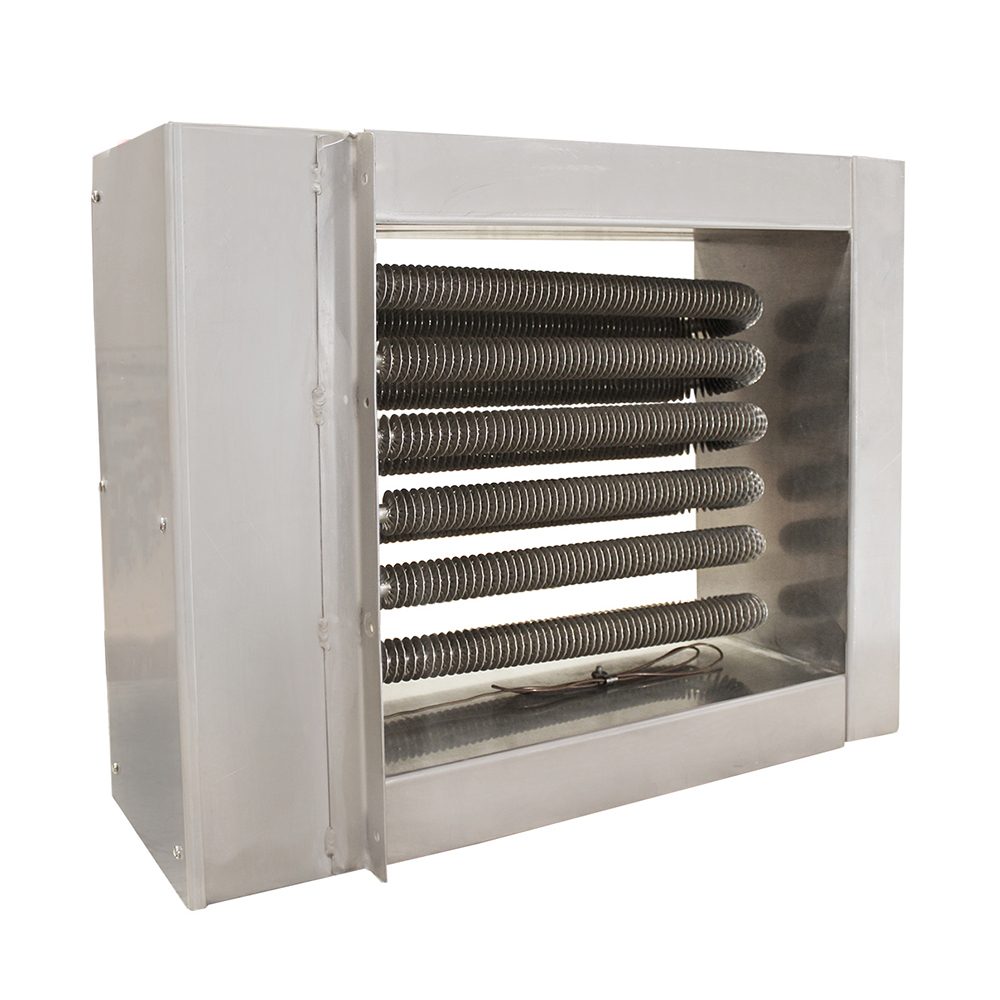Air duct heaters, also known as duct-mounted electric heaters, are widely used in industrial, commercial, and HVAC systems to heat air flowing through ventilation ducts. They provide efficient heating for processes such as drying, dehumidification, and environmental control. However, because they involve high temperatures and electrical energy, safety becomes a critical factor in their operation. Proper installation, maintenance, and monitoring are essential to ensure that air duct heaters run reliably without creating risks.
Below are the key measures to guarantee the safe use of air duct heaters.
1. Correct Installation Practices
- Follow Manufacturer Guidelines:
Always install air duct heaters according to the technical instructions provided by the manufacturer. Incorrect installation may lead to overheating, poor airflow, or electrical hazards.
- Adequate Airflow:
One of the most important safety requirements is ensuring that sufficient airflow passes through the duct. Without proper airflow, the heater can overheat and fail.
- Proper Duct Sizing:
The duct should be large enough to accommodate the heater without obstructing air circulation. A tight or undersized duct may cause pressure build-up and overheating.
- Qualified Technicians:
Installation should be carried out by certified electricians or HVAC specialists to minimize risks of wiring errors or mechanical faults.
2. Use of Safety Devices
- Temperature Limit Switches:
Air duct heaters should be equipped with automatic temperature limit controls. These switches cut off power if the heater exceeds safe temperature levels.
- Airflow Switches:
Airflow monitoring devices detect whether there is adequate ventilation. If airflow drops too low, the heater shuts down automatically to prevent overheating.
- Fuses and Circuit Breakers:
Electrical protection devices prevent overcurrent, short circuits, and fire hazards. They must be properly rated for the heater’s power capacity.
3. Regular Maintenance and Inspection
- Cleaning:
Dust and debris can accumulate inside ducts and around heating elements, reducing efficiency and posing fire risks. Regular cleaning ensures safe performance.
- Checking Electrical Connections:
Loose or corroded connections can cause sparks or overheating. Routine inspection helps detect and fix these issues early.
- Monitoring Heater Elements:
Heating elements should be checked for wear, cracks, or discoloration. Damaged elements should be replaced immediately to prevent failure.
- Testing Safety Devices:
Limit switches and airflow sensors must be tested periodically to confirm they are functioning correctly.
4. Safe Operating Procedures
- Never Operate Without Airflow:
The heater must always operate with proper ventilation. Running it without airflow can cause rapid overheating and damage.
- Avoid Overloading the System:
Do not connect the heater to an electrical system that cannot handle its power demand. Overloading may cause electrical fires.
- Gradual Temperature Control:
Adjust temperature settings gradually instead of making sudden changes, which can stress the heater and shorten its lifespan.
- Monitoring During Operation:
Operators should check system indicators and alarms regularly while the heater is running. Any unusual noise, smell, or vibration should be addressed immediately.
5. Compliance with Safety Standards
- Industry Regulations:
Air duct heaters must comply with international and local safety standards such as IEC, UL, or CE certifications. Using certified products ensures reliability and safety.
- Proper Labeling and Documentation:
All control panels, switches, and safety devices should be clearly labeled for easy identification during emergencies.
- Training for Operators:
Personnel should receive training on safe operation, emergency shutdown procedures, and basic troubleshooting.
6. Emergency Preparedness
- Automatic Shutoff:
Systems should have an emergency shutoff switch that immediately disconnects power to the heater in case of failure.
- Fire Safety Measures:
Fire extinguishers and smoke detectors should be installed in areas where air duct heaters operate.
- Regular Safety Drills:
Facility staff should practice emergency procedures to ensure quick response in case of overheating or fire.
Conclusion
Ensuring the safe use of air duct heaters involves a combination of proper installation, reliable safety devices, regular maintenance, and operator awareness. When these practices are followed, air duct heaters can provide efficient and consistent heating without posing unnecessary risks.
Ultimately, safety in air duct heater operation is not just about equipment design—it is about creating a system where every component, from airflow control to operator training, works together to prevent hazards. By prioritizing safety, businesses and facilities can maximize efficiency while protecting people, property, and equipment.


 English
English русский
русский Français
Français Español
Español عربى
عربى
